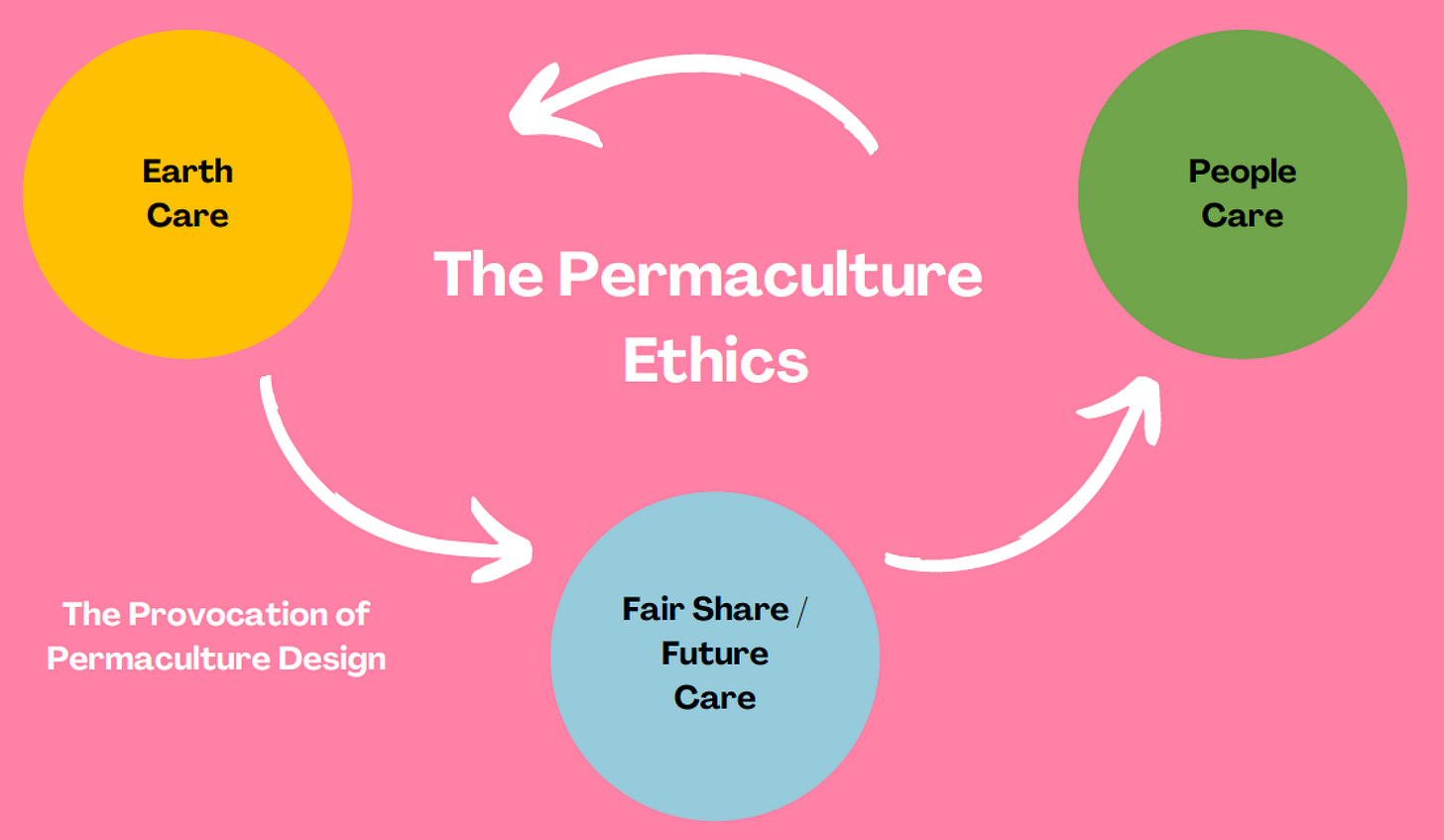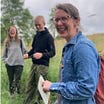On the Provocation of Permaculture Design
Liz Postlethwaite explores the intentions of permaculture practice and how it has effected her life in her contribution to the first issue of the Novitas Magazine.
This is the third article printed in the Novitas Magazine. I’m excited to share the articles here in the substack and on the Novitas website at novitasmag.com. Liz and I also chatted in more depth about this article on the podcast episode here: https://www.novitasmag.com/beyond-the-garden-permaculture-as-a-way-of-life/
Enjoy!
Permaculture design is a tricky beast to pin down. It means lots of things to lots of people, but to me, I see it as being broken down into two different sections:
Permaculture is simply an alternative way to describe regenerative things, with regenerative meaning any system that is focused on the preservation of life in all its forms.
Permaculture design is a set of tools that we can use to create regenerative things.
Further to this, the provocation of permaculture design is to bring together three things:
Systems thinking and design.
Observing and learning from nature and, by association, from indigenous wisdom and traditional ecological knowledge.
Ethics.
The idea is to bring these three lenses together to design all aspects of human life and habitation in such a way that lessens their impact on the planet and moves them toward making a positive contribution to the complex ecosystem that we are all part of. This unique combination is at the heart of permaculture design—and one that still remains unique since its original inception by Bill Mollison and David Holmgren in the early 1970s. It is the interaction between these three elements that is the exciting part. To consider each on their own is not so challenging, but to do all three at once asks us to observe, think, and act in ways that really challenge us to live and be in new and different ways.
The ethics that sit within this are seemingly simple:
People Care
Earth Care
Fair Share/Future Care
But if we really think about these three things in our lives and use them to help shape the things that we do and the ways that we live, how would it be if we really centered our lives around care for people, care for the planet, and a drive for equity and fairness? What would happen if we thought about the legacy that our lives will have in the future as much as we thought about how it benefits us in the here and now?
It is also worth noting that these three ethics are almost identical to the foundational ideas at the core of most indigenous cultures in the world. This should come as no surprise, as when Bill Mollison originally articulated them, he had spent a huge amount of time learning from indigenous communities within his home country of Australia. He was open and honest about how inspired he was by the things that he had learned and by the fact that the ethics that he placed at the heart of permaculture design were deeply indebted to the living culture he had observed.
I think this acknowledgement and connection is one of the things that I love most about permaculture ethics.
For those of us living within extractive, industrial cultures, we may feel that something has gone awry with our way of being. We can tell that we have lost connection to the wild.
World and that we’re causing great harm to it and, by association, to ourselves. We know that we need to recalibrate our place in this world, but we aren’t quite sure how to do it.
Permaculture ethics help us recreate and re-imagine living cultures wherever we are starting from, but to do so in a way that does not take ideas and practices that are not ours to take. Or to appropriate ways of being that we do not have permission to use.
Permaculture ethics help us cast aside colonial ways of being and start creating our own new ways that may, in their own way, help to heal the world. And help us to feel like we belong here again.
Having thought about all of this, it seems clear to me that if you created a Venn diagram that represented the absence of these ethics, the climate and ecological crisis would sit at the centre of that diagram in the space where the three circles cross. An absence of all three is, at least in part, what has led us to this moment of crisis that we find ourselves in.
And also, to me, these ethics are all about the manifestation of care in action. When I first learned about them, I thought they looked like three separate circles: three islands of care, which may at times overlap and collide but essentially sit side by side.
Now I feel they are more like this:
An amplification of care gets bigger and bigger and louder and louder, moving ever outward but always starting with ourselves. Because, after all, as a single being, which is one tiny part of this complex, entangled universe, where else could each of us conceivably start?
But on a practical level, what does that mean?
Well, when I first undertook a permaculture design course, I did so because I wanted to design my garden, but the more I learned about it, the more I realised that it was actually about redesigning my whole life, starting with myself. If I wanted to make a positive contribution to the whole, that whole being the complex multi-species ecosystem that I am part of on planet Earth, then it wasn’t just about designing a garden or a plot of land. It was about rethinking everything.
My relationship with these ethics over the years has been a progression of natural growth. At first, it was simply recognizing that they exist and that they need to be considered in everything that I do in my life. Soon, thinking and designing with permaculture ethics at the centre became a habit. And finally, permaculture ethics have become comforting friends that are my guiding light.
The ethics are compass points in my life, rather than criteria that I achieve or fail to achieve. And as a permaculture practitioner, all of the designs that I do are about growing these ethics. Day by day, I aim for them to be a bit more present in my life as a result of my designs. There isn’t an endpoint or a place to reach. Our idea of ethics is so culturally contextual, and the highest ambitions that we can see now are probably far short of what could actually be achieved.
The ethics have helped me acknowledge and lean into the reality of these things as a messy and unruly entanglement. This understanding has provoked me to think deeply about what it means to be a creature of place, what it means to start becoming indigenous again, to be an animal once more, to find myself belonging to and in kinship with the web of life, and to become whole.
This has meant slowing down and engaging in the world in a more mindful way. Where previously I was working all over the country, now I prioritise investing my time and energy locally and hyper-locally, thinking all the time about how I can connect to and help grow and regrow complex multi-species communities and ecosystems. I am thinking about how I can best contribute to growing shared resilience and preparedness at a time of multiple challenges.
Permaculture design and ethics have changed my life. I am in more alignment and truth every single day than I could have imagined. I have become more resilient, more mindful of my needs, and more energised to participate, transform, collaborate, and share my skills and ideas to contribute to the living world.
By embedding these ethics at the heart of everything, I feel empowered to see life differently and to participate in a restorative and replenishing way. It has helped me move from a mindset of scarcity and fear about the future to one of abundance and possibility. While I still feel truly afraid of what the future has in store for us all, I feel more able to move into emergency mode as the reality of the climate and ecological crisis, ever-growing and tangled, emerges.










